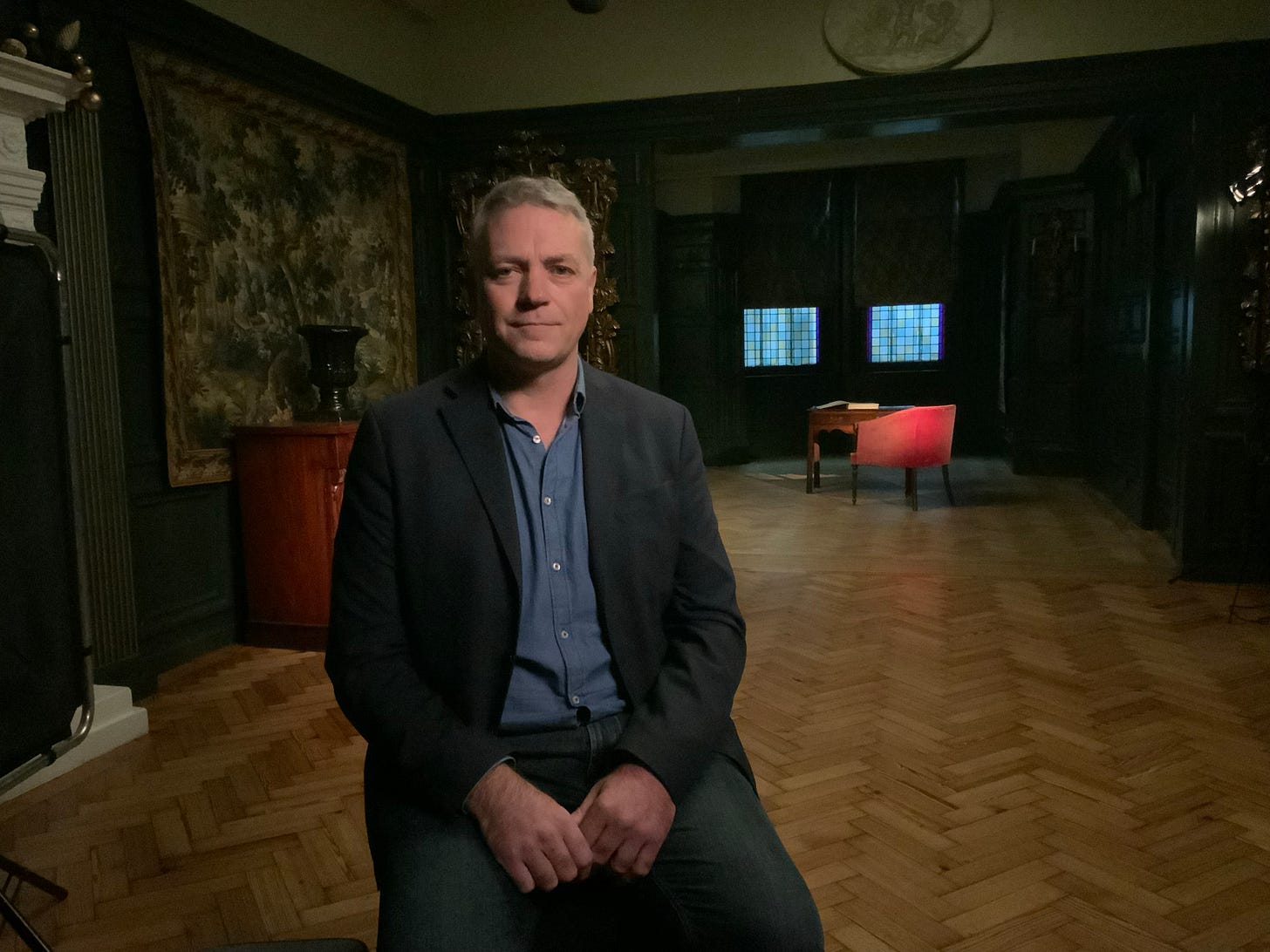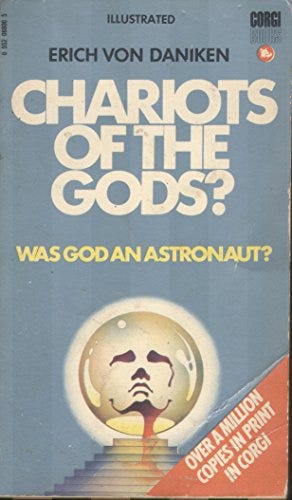Did aliens build the mysterious Nazca lines in the Peruvian desert?
Are they linked with the so-called ‘Nazca mummies’ recently promoted as ‘non-human’ fossils that some claim are more than 1,000 years old?
The answer to these two questions is a simple No….
But the complete lack of evidence to support these beliefs does not convince those who appear in the American TV series Ancient Aliens, currently in its 20th season (254 episodes).
The current revival of interest in the fascinating ancient astronaut mythology is the subject of my most recent by-lined feature in the Daily Mail/MailOnline (paywall).
Indeed, a 2020 poll found that nearly a third of Americans agree that aliens have visited the Earth in the distant past. And a more recent survey in Britain found that 15 percent of us say we believe that ancient monuments such as Stonehenge and the puzzling Nazca lines in the Peruvian desert were created with help from ET.
Swiss author Erich von Daniken was one of the first authors to claim the Nazca lines were constructed by aliens as ‘an improvised airfield’. But the German archaeologist Maria Reiche, who spent three decades in Peru investigating the mysterious lines, rebutted this far-fetched explanation, saying that ‘the ground is quite soft, I’m afraid the spacemen would have gotten stuck’.
Chariots of the Gods?, von Daniken’s first book, was published in 1968 and his subsequent writings have become a modern publishing phenomenon. But the idea of ET intervention in prehistory long predates von Daniken. It inspired science fiction authors including Charles Fort and H.P. Lovecraft and can be traced back to the early 19th century.
More recently, it provided inspiration for film-makers such as Stanley Kubrik, Roland Emmerich and Steven Spielberg – who included the Mayan Crystal Skulls and the Roswell UFO in his Indiana Jones franchise.
von Daniken’s ideas resurfaced last September when images of two ‘alien mummies’ allegedly found near the Nazca lines were flashed around the world when they were shown to politicians at a hearing of Mexico’s National Congress.
The meeting aimed to examine UFO sightings but promoter Jaime Maussan used it to proclaim the three-fingered fossils were ‘non-human’ and were 1,000 years old. He said they provided proof ‘we are not alone in the universe’. The so-called fossils were later seized by Peruvian authorities who have exposed them as crude dolls constructed from animal bones and modern synthetic glue.
Ancient astronaut beliefs are dismissed by historians and scientists as far-fetched pseudoscience. This is certainly correct but these ideas have a long back story in popular culture that is worthy of study. As a teenager I devoured Erich von Daniken’s books and was hooked by the ITV show Arthur C. Clarke’s Mysterious World with its striking opening titles that featured the mystical Mayan crystal skull. Although I was only a child when Apollo astronauts landed on the moon, as I grew older it seemed logical to believe that if humans could leave the Earth to explore our solar system then alien intelligences could also have done so long ago.
My fascination with ancient mysteries inspired me to study archaeology at the University of Sheffield where my teenage ambition, to follow Indiana Jones into the South American jungles in search of alien artifacts, hit harsh reality. I soon learned that each and every claim listed in his books as proof of alien intervention in ancient Egypt and Easter Island had been comprehensively debunked.
Today I am more interested in why people believe that aliens played a role in these spectacular examples of human ingenuity. And how similar beliefs, in UFOs and related mysteries, are revived and repackaged every so often so they appear fresh all over again to new generations.
My friend, the English teacher Chris Aubeck, author of a series of books called Alien Artifacts, says the current controversy is a repeat of rumours and hoaxes about alien mummies discovered in Peru that can be traced back 160 years.
‘This is not the first time that Peru has been the centre of such extraordinary claims,’ Chris told me. ‘Almost exactly 150 years ago, in 1878, there were press stories about a mummified body that was found by a chemist and his team inside a chamber within an enormous meteorite.’ Aubeck said the ‘mummy’ was described in vivid detail: ‘the head was almost intact, it has no hair, the skin was smooth and beardless…and looks like tanned leather’. Its face was ‘flattened, instead of a nose it has a trunk coming from the forehead and a very small mouth’.

Beside the mummy the excavators found a silver plate depicting celestial bodies including Mars and they concluded it was a visitor from the Red Planet. The Peruvian story captured the public imagination in 1878 because Mars was closer to Earth than it had been in 47 years. This led astronomers to identify the Martian moons, and, in August of the previous year, the Italian Giovanni Schiaparelli observed what he thought were artificial features on the surface of planet that were described as ‘Martian canals’.
During his research Chris traced the Peruvian story to a newspaper in Argentina that copied it, word for word, from a work of fiction, An Inhabitant of the Planet Mars, written by a French mining engineer, Francois-Henri Peudefer de Parville. De Parville’s novel ended with a note admitting it was fiction and there was a big clue in the date of publication – April Fool’s Day in 1864.
‘But this admission did not prevent the story from taking on a life of its own,’ he said. ‘The journey of this tale from a French newspaper in 1864 to Argentina and then Peru in 1878, and now a new claim in 2024 just shows the enduring appeal of stories about extraterrestrial life.

Chris says the ancient Peruvians did not leave written records so their monuments and remains are easy targets for wild speculation. Much like me, he was a 14-year-old when he first read Erich von Daniken and his imagination was fired by the Swiss writer’s claim to have joined an expedition to Ecuador with explorer Juan Moricz. At Cuevo de los Tayos (the cave of the oilbirds) he claimed that had found a secret entrance to network of tunnels that contained a library written thousands of years ago on sheets of metal - left behind by a race of fair skinned, technologically advanced creatures from elsewhere.
‘I joined the Ancient Astronaut Society whose regular bulletins allowed enthusiasts to share news about our lost golden past’, he said. ‘But as the years passed, my initial awe was tinged by disappointment. Moricz admitted there had been no expedition and although von Daniken claimed he had seen the library he had embellished the story for dramatic effect’.
Chris says it is difficult to disprove ideas that have been circulating for almost 200 years. ‘But there is a disconnect between ancient artifacts and most people’s general knowledge.
‘When we see architectural wonders, we must remember technical know-how gets lost when empires fall. It’s always been fun to dream of a lost golden past and watch subversive figures like Erich von Daniken try to pick holes in established wisdom.
‘Who wouldn’t love to prove their teachers at school were wrong? Twenty seasons of ancient aliens have taught us just one thing: this subject is big business’.






Fascinating. I wonder if the “need to believe” is an entirely human trait ? and whether an AI program might create a “belief” of its own ?
Became interested in this subject recently when visiting Bishops' House here in Sheffield which is wonderful for witch marks etc. It is good to hear of sensible and rational sense being used for much of the superstitious nonsense one reads of nowadays. I will be at your talk at Weston Park in October!